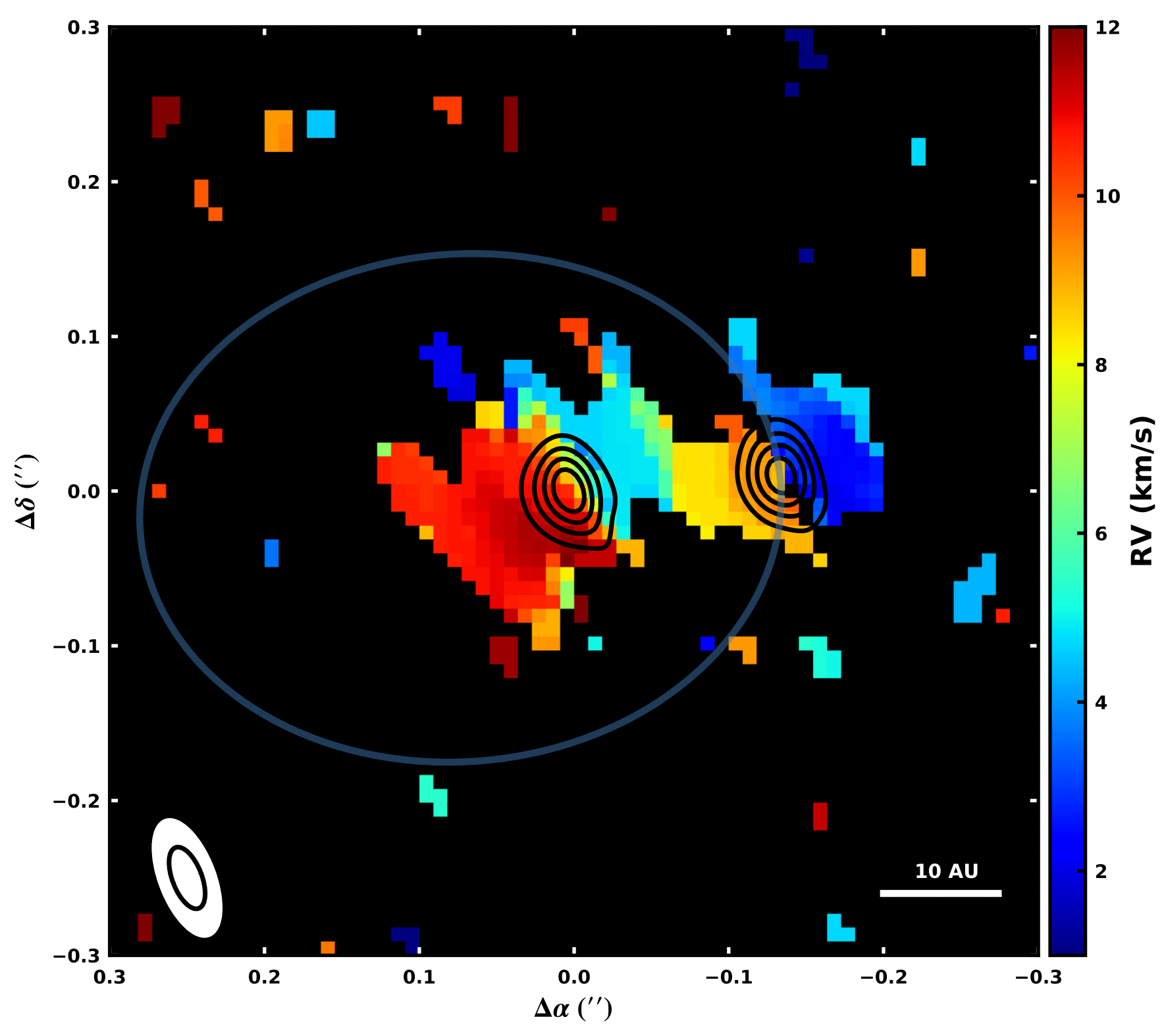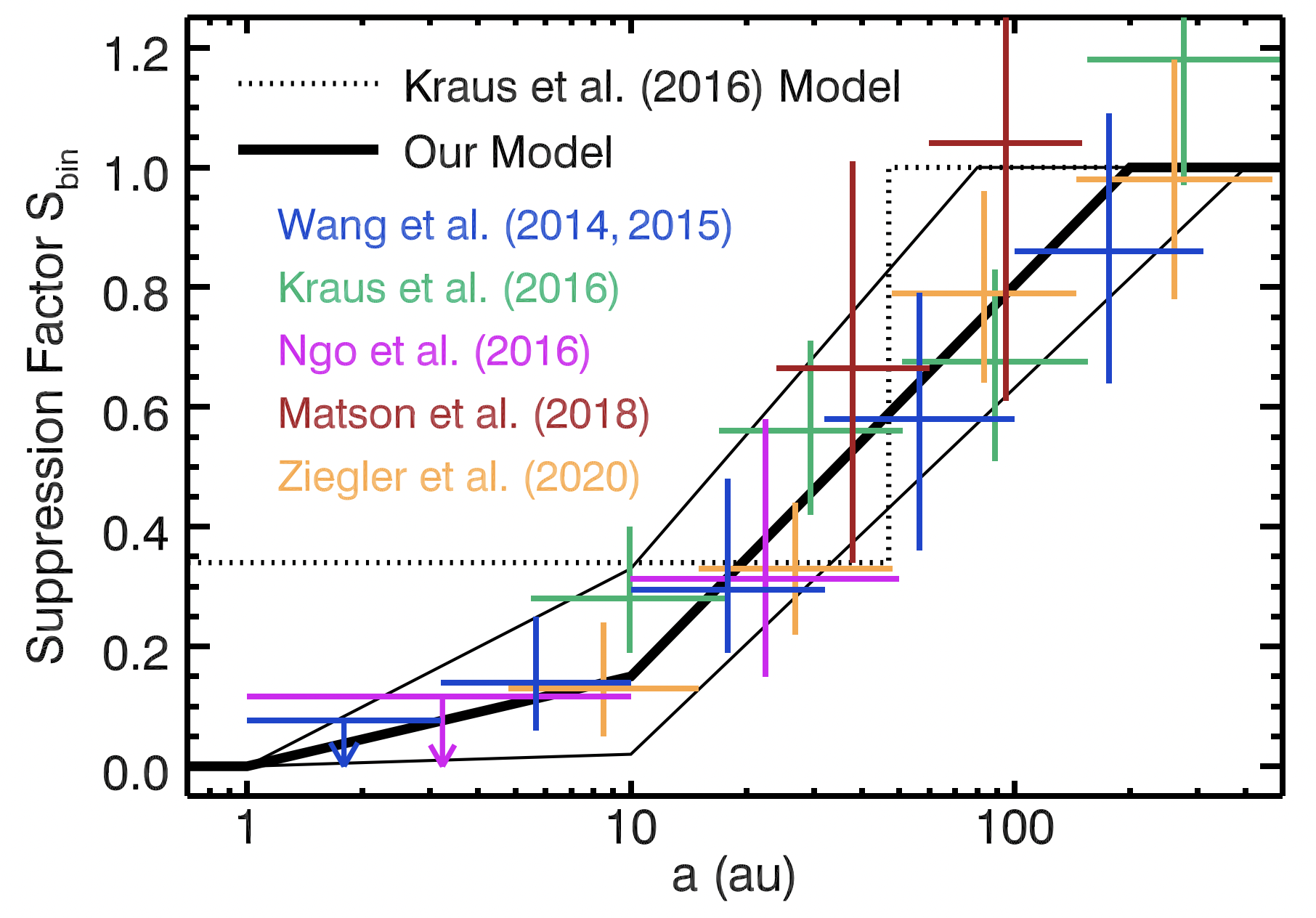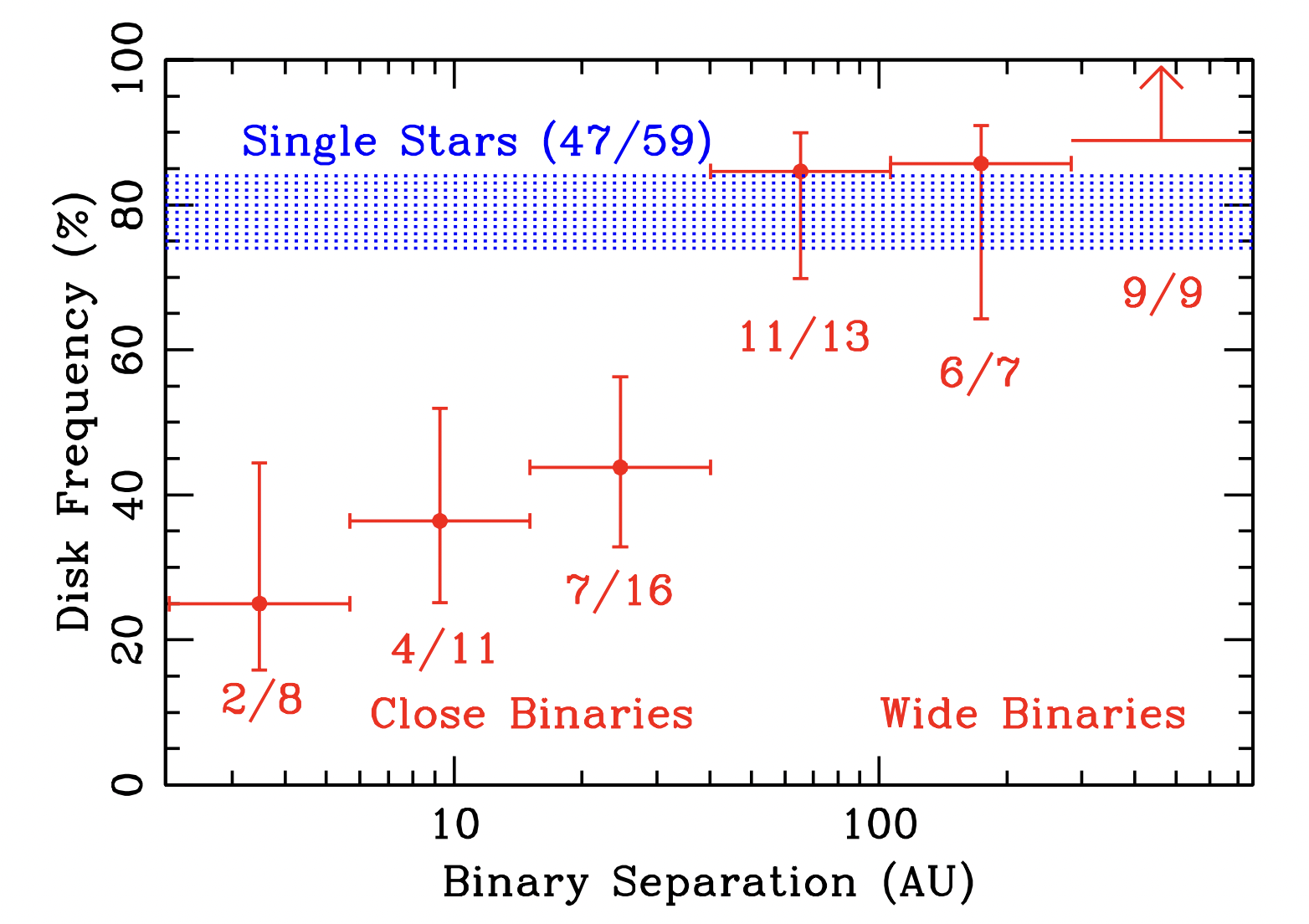Planet Formation in Binary Systems: An ALMA Study
(A more general overview of my research program can be found here.)
Motivation
The population of planets in binary systems has shown us that as the binary separation declines, so too does the planet occurrence rate. A similar trend is seen in the occurrence rate of protoplanetary disks in young binary systems, signaling an intuitive link between the early retention of a planet-forming reservoir and the mature population. The two figures below highlight these findings.
Close binaries clearly impact the planet formation process. At the same time, at all binary separations, a substantial minority of planets are able to form and survive, some in dizzyingly complex architectures. Kepler-444, for instance, hosts 5 transiting planets in an eccentric binary system where the companion passes within 8 AU at closest approach. It is challenging to imaging how such a system could host stable disk material over a timescale long enough to support planet formation.
I am interested in determining what factors allow some close binaries to form planets while other do not.
An ALMA Survey of Young Binaries with Known Orbital Parameters
I am leading an ALMA survey to probe the dynamical interaction between the binary orbit and the individual protoplanetary disks. The targeted systems have been monitored for decades with high-angular resolution imaging (Keck AO, HST) resulting in well-characterized orbital solutions. That is what makes this program unique. There have been many studies of planets and disks in binary systems but rarely do they have information on what the stars are doing in these systems. With these data I am determining individual disk orientations, dynamical truncation radii, and masses, while placing all of these measurements in the context of the binaries that are sculpting the planet-forming environment.
I am also working to compare the orbital parameters of these systems to a control sample of young, disk-free binaries to determine which orbital parameters are predictive of disk retention and therefore, planet formation.
Early Results: FO Tau
 The data are in! It is still early days, but here is an early result for FO Tau, a ~22 AU separation binary hosting two, near-equal-size circumstellar disks. The black contours display the 1.3 mm dust continuum of each disk, the small black oval in the bottom right in is the beam size of the continuum map. The colored background is the intensity weighted velocity of CO (J=2-1). Its beam size is the white oval in the bottom right. The blue line is the binary orbit. Our initial findings for this system suggest that the disks are aligned with the binary orbit.
The data are in! It is still early days, but here is an early result for FO Tau, a ~22 AU separation binary hosting two, near-equal-size circumstellar disks. The black contours display the 1.3 mm dust continuum of each disk, the small black oval in the bottom right in is the beam size of the continuum map. The colored background is the intensity weighted velocity of CO (J=2-1). Its beam size is the white oval in the bottom right. The blue line is the binary orbit. Our initial findings for this system suggest that the disks are aligned with the binary orbit.
More to come for FO Tau and the other binaries in our sample.


